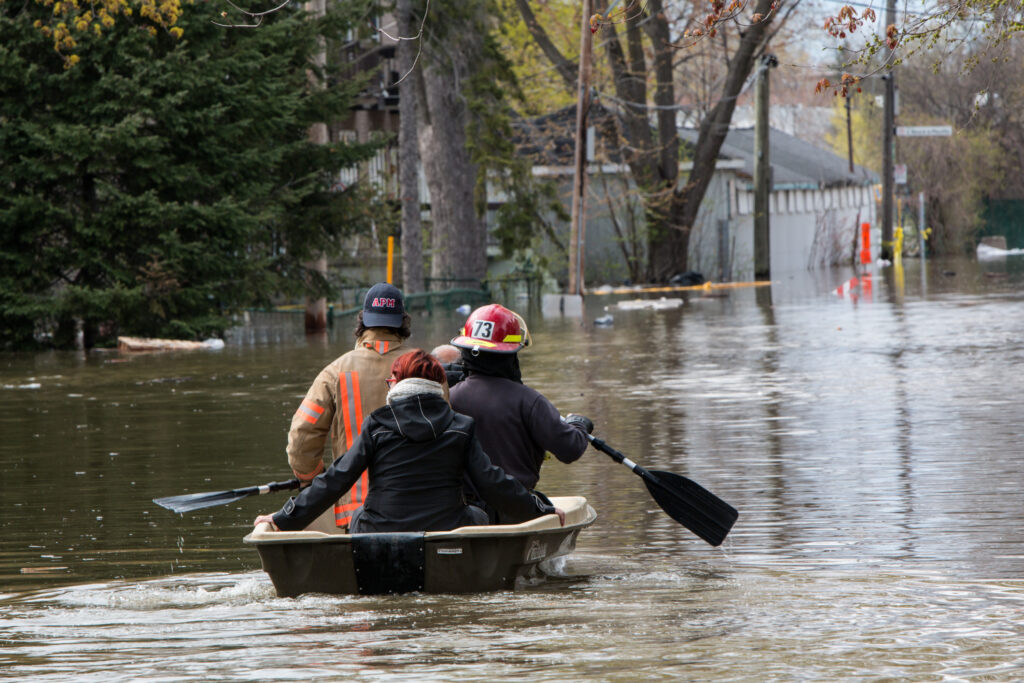Natural disasters are on the rise in Canada. With climate change contributing to shifts in weather patterns, there is a steady increase of severe weather events.
During a disaster, multimedia content posted on social media platforms can offer a wealth of information, ranging from posts detailing first responder actions and evacuee routes to reports of damaged infrastructure and affected areas. This data holds immense potential for aiding first responders and utility crews in their crucial tasks. However, important insights are often mixed with irrelevant information – obscuring the facts.
Carleton University researcher Marzieh Amini is pioneering an innovative solution to extract important information from the sea of social media posts during disasters in Canada.

“Climate-related disasters are becoming increasingly more frequent and severe,” says Amini, an assistant professor in Carleton’s School of Information Technology.
“Our goal is to filter out irrelevant information and distill meaningful insights that can ultimately help save lives.”
Aiding in Disaster Response
Disasters unleash a torrent of information across social media platforms. From eyewitness reports to photos and videos capturing the unfolding chaos, these digital footprints hold invaluable insights. But discerning actionable information from the noise poses a significant hurdle.
“The presence of irrelevant content such as advertisements, political commentary and memes further complicates the process, hindering swift and effective response efforts,” says Amini.

This is where Amini’s work comes in. Her team collects and analyzes text and image data shared on X (formerly Twitter) during crisis situations. They then build AI models to categorize the social media posts into major themes. These include political commentary, warnings and status updates, weather reports, affected infrastructure, accounts of first responder actions and information for evacuees.
Amini is structuring her research off the already existing Crisis Multimodal Data (CrisisMMD) – a dataset that captures and analyzes social media content related to crises and disasters in the United States.
“Our goal is to create datasets tailored to the Canadian context, focusing on disasters such as wildfires, tornadoes and storms,” she says.
Amini says this dataset has the potential to provide first responders with real-time, actionable insights to help them figure out where to go, who’s been affected and what barriers exist for providing help.
“First responder response time can be hindered by roadblocks, unstable buildings, phone lines being down and even traffic jams,” Amini explains. “As a communication tool, social media posts by every day citizens have the power to help.
“But we need to weed out the irrelevant information first,” Amini says.
“We are using AI for real-time analysis of social media data during disaster events.”
Efficient Power Restoration for Faster Recovery
Amini’s work not only aids first responders, it also holds transformative potential to drastically reduce the length of power outages – an increasingly prevalent issue in Canada – by equipping utility crews with critical insights gathered from their social media analysis.

In 2022, 1.4 million people across Canada’s East Coast experienced outages for over two weeks due to Hurricane Fiona.
In the same year, the Ottawa region and parts of Quebec were hit with a derecho, causing significant damage to infrastructure and more than 400,000 power outages. Many of these outages lasted for more than ten days.
And in 2019, British Columbia Hydro reported over five million power outage hours caused by storms.
“If workers had access to real-time information on areas experiencing prolonged power outages and obstacles hindering repair efforts, this could allow them to invest their resources accordingly,” she explains.
“The goal is to use technology instead of a crew member.”
Informing Future Policymaking
Amini’s research also has broader implications for policymaking. With better knowledge of what happened during a disaster, policymakers can make informed decisions about infrastructure planning and development, ensuring to reduce risks and address vulnerabilities.

Some considerations could include prioritizing upgrades in vulnerable areas, updating building codes and improving emergency response protocols.
“We envision this tool will serve as a valuable resource for decision-makers, empowering them to make informed choices in disaster management and policy,” Amini says.
With funding from the National Research Council of Canada (NRC), and in collaboration with Dr. Isar Nejadgholi, a senior research officer at NRC, Amini’s project is poised to make significant strides in transforming disaster response strategies. As the research progresses, Amini envisions a future where technology plays a pivotal role in facilitating swift and effective disaster response efforts, ultimately saving lives, and mitigating the impact of disasters on communities.
“Technology offers a pathway to efficiency,” she says. “And it has the power to revolutionize and democratize Canada’s disaster response.”
